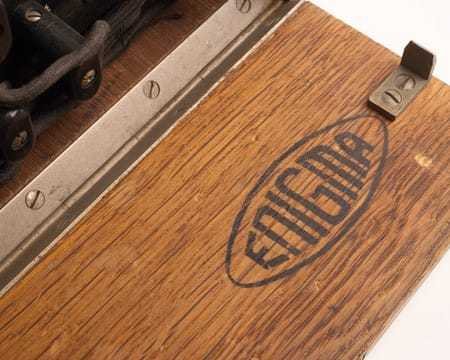Artifact Details

Intercepting and translating code gave the Allied forces a strategic advantage over the Germans.
During World War II, the Germans used the Enigma, a cipher machine, to develop nearly unbreakable codes for sending secret messages. The Enigma’s settings offered 150,000,000,000,000,000,000 possible solutions, yet the Allies were eventually able to crack its code.
The machine was developed by the Dutch to communicate banking secrets. The Germans bought the patent in 1923 for intelligence purposes. Polish intelligence was able to purchase an Enigma at a trade fair and procure a codebook from a French agent. When Poland was overrun in 1939, the Poles realized they wouldn’t have capabilities to solve the code and gave the information and machine to the Allies.
By end of the war, the British were reading 10 percent of all German Enigma communications at Bletchley Park, in England, on the world’s first electromagnetic computers.
This is a three-rotor Enigma. The Germans eventually added two more rotors, and with each change, Allies had to obtain a new machine and codebooks.
Artifact Specs
32 cm x 26 cm x 15 cm
(L x W x H)
Additional Photos







